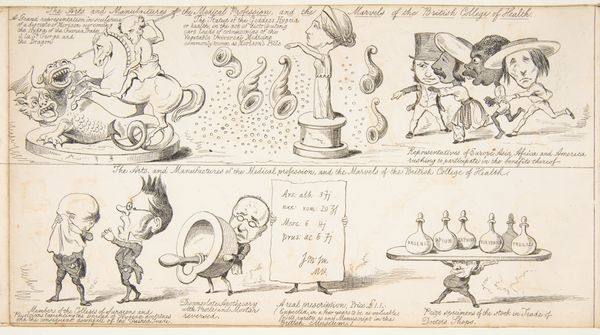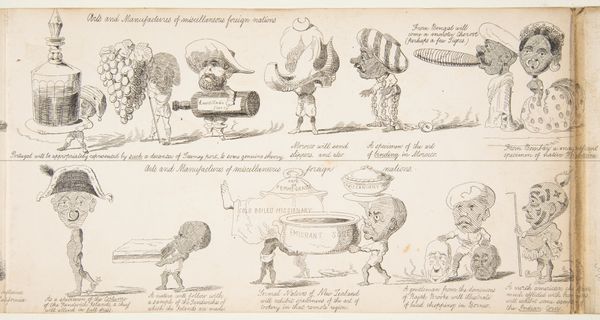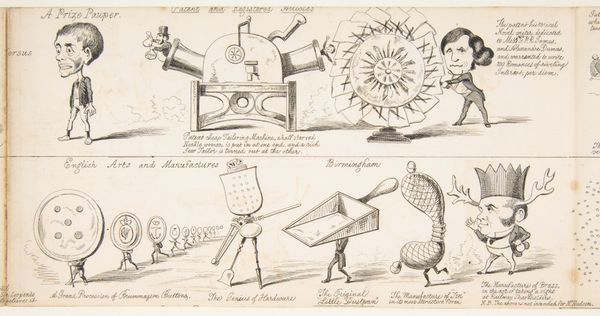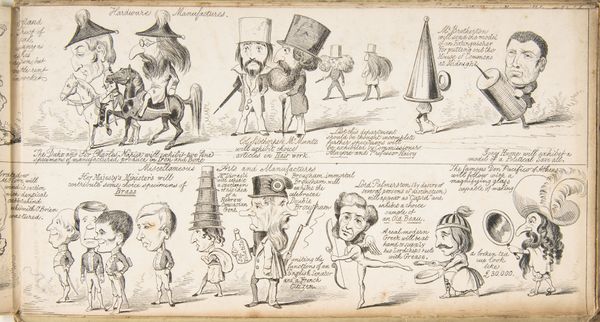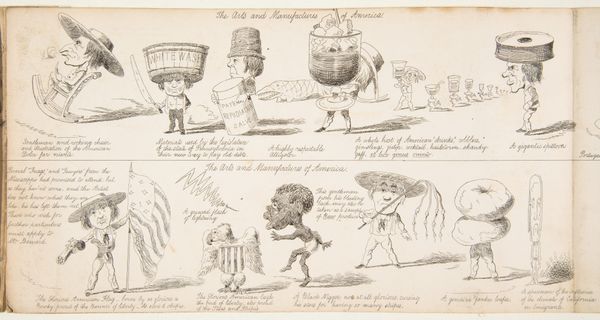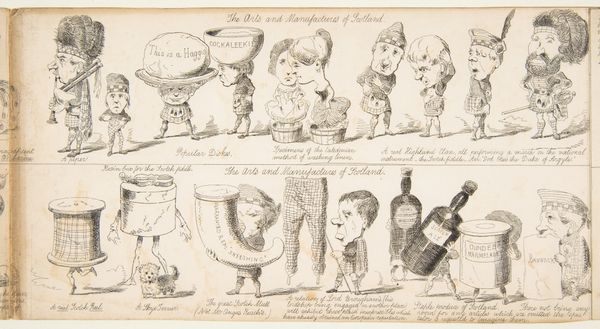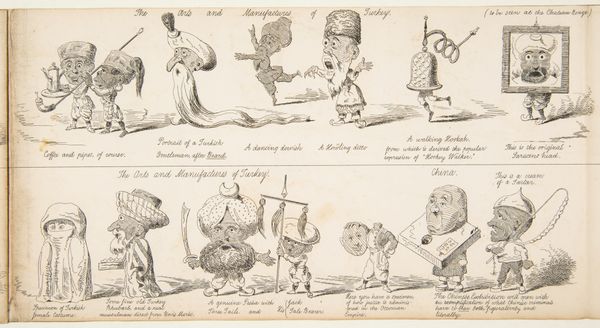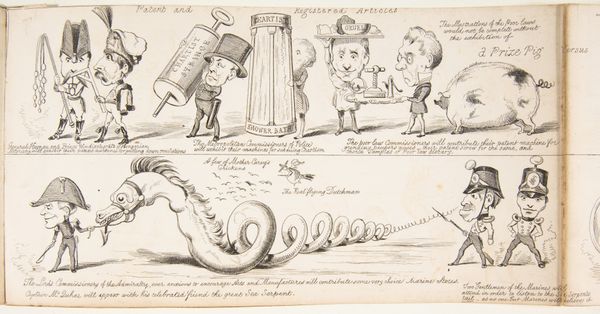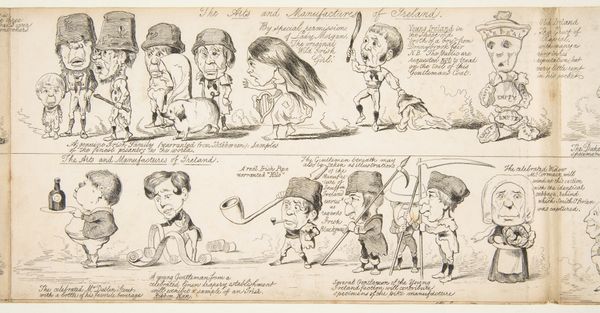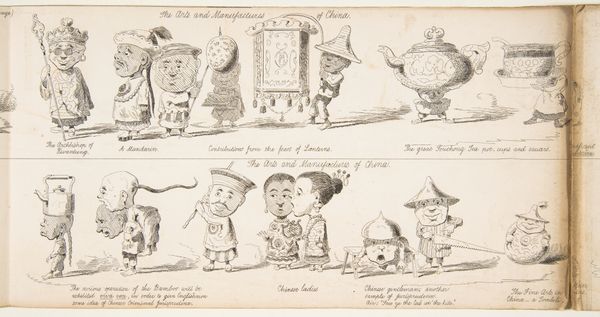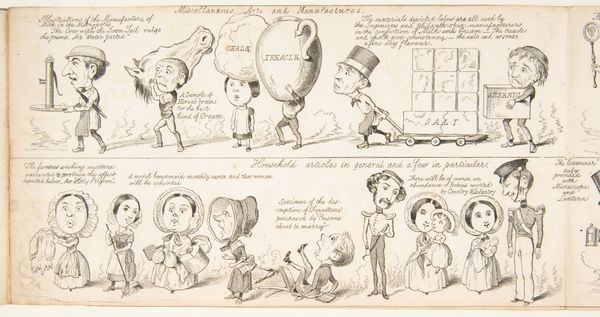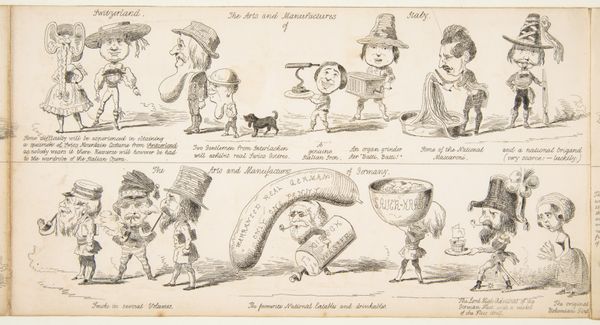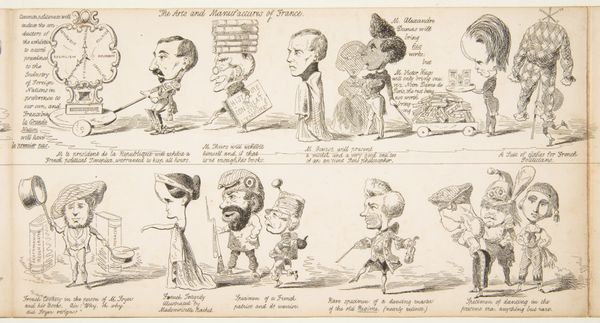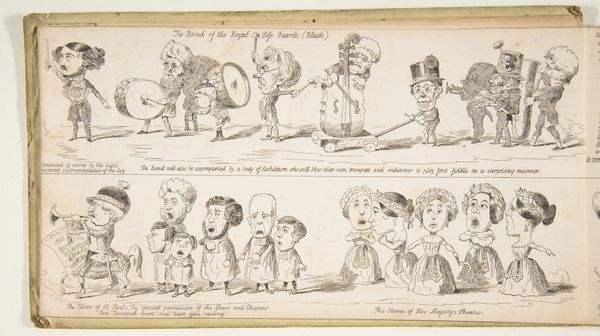
The Great Exhibition "Wot is to Be", Probable Results of The Industry of All Nations in The Year '51, Showing What is to be Exhibited, Who is To Exhibit, in Short How Its All Going to Be Done 1850
0:00
0:00
drawing, print
#
drawing
# print
#
caricature
#
figuration
#
line
#
history-painting
Dimensions: sheet: 5 1/16 x 9 5/16 in. (12.8 x 23.7 cm)
Copyright: Public Domain
Editor: This is "The Great Exhibition 'Wot is to Be'," a drawing and print by George Augustus Sala, made around 1850. It's quite busy, almost chaotic, with all these little scenes playing out. I’m immediately struck by its satirical tone – the figures seem to be caricatures, exaggerating aspects of Victorian society. What exactly is Sala critiquing here? Curator: What a fantastic question! It's vital to recognize that this image comes on the eve of the Great Exhibition in 1851. Sala's critique cuts deep into the heart of Victorian society's obsession with industrial progress and national pride. He is doing more than just making fun of things; the exaggeration reflects deeper anxieties and power dynamics at play. How do you see the visual style supporting that message? Editor: Well, the figures themselves are almost monstrously disproportionate. There's something unsettling about how material objects, like "Gutta Percha" products and "Holloway’s Pills," are personified and seemingly given more importance than actual people. It definitely challenges a straightforward celebration of industry. Curator: Precisely! And notice how these products are tied to notions of Englishness. He uses caricature not just to ridicule but to highlight the perceived absurdity of equating national identity with material production. He may be commenting on the displacement of labour or access to materials by way of an expanding British empire at this time, and by extension England's problematic colonial aspirations. Are you picking up on any specific references to social class within this satire? Editor: I do. There's the professor in his "triumphal chariot," almost mocking intellectual authority being used to sell "Holloway's Pills". I wonder about those cricket balls with legs. Curator: A loaded reference! Cricket was becoming increasingly associated with ideas of fair play, gentlemanly conduct and was therefore entrenched in ideas around social standing. It becomes intertwined with how empire and national identity intersect with class in Victorian England. Sala masterfully unveils how the values, ideals and industrial efforts were inherently intertwined with social stratifications. Editor: That makes so much sense now! It is a deeper criticism than it seemed. Curator: Indeed. The piece reminds us that so-called “progress” rarely benefits everyone equally, and often masks underlying inequalities.
Comments
No comments
Be the first to comment and join the conversation on the ultimate creative platform.
